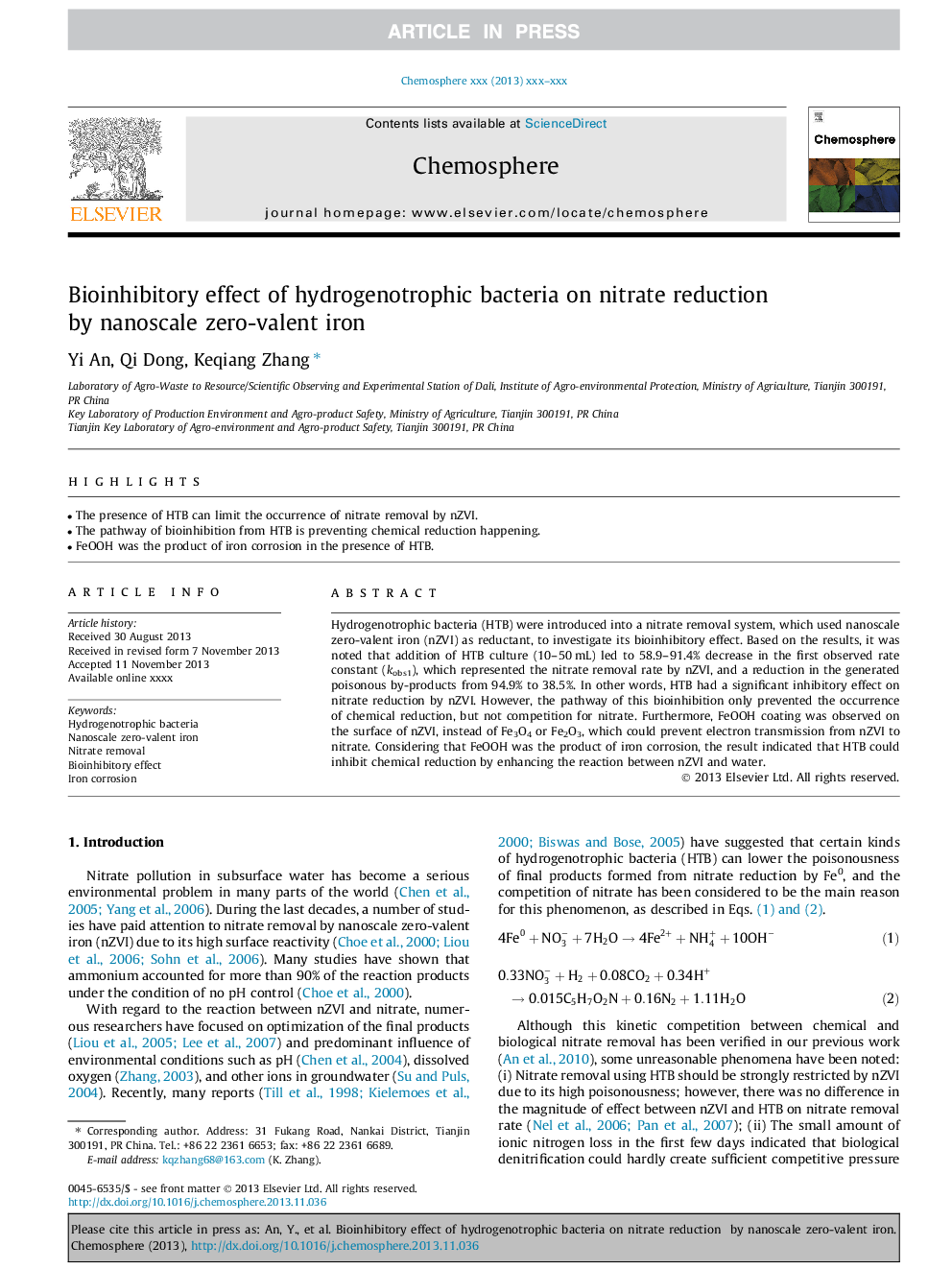| Article ID | Journal | Published Year | Pages | File Type |
|---|---|---|---|---|
| 6309231 | Chemosphere | 2014 | 6 Pages |
Abstract
Hydrogenotrophic bacteria (HTB) were introduced into a nitrate removal system, which used nanoscale zero-valent iron (nZVI) as reductant, to investigate its bioinhibitory effect. Based on the results, it was noted that addition of HTB culture (10-50Â mL) led to 58.9-91.4% decrease in the first observed rate constant (kobs1), which represented the nitrate removal rate by nZVI, and a reduction in the generated poisonous by-products from 94.9% to 38.5%. In other words, HTB had a significant inhibitory effect on nitrate reduction by nZVI. However, the pathway of this bioinhibition only prevented the occurrence of chemical reduction, but not competition for nitrate. Furthermore, FeOOH coating was observed on the surface of nZVI, instead of Fe3O4 or Fe2O3, which could prevent electron transmission from nZVI to nitrate. Considering that FeOOH was the product of iron corrosion, the result indicated that HTB could inhibit chemical reduction by enhancing the reaction between nZVI and water.
Related Topics
Life Sciences
Environmental Science
Environmental Chemistry
Authors
Yi An, Qi Dong, Keqiang Zhang,
